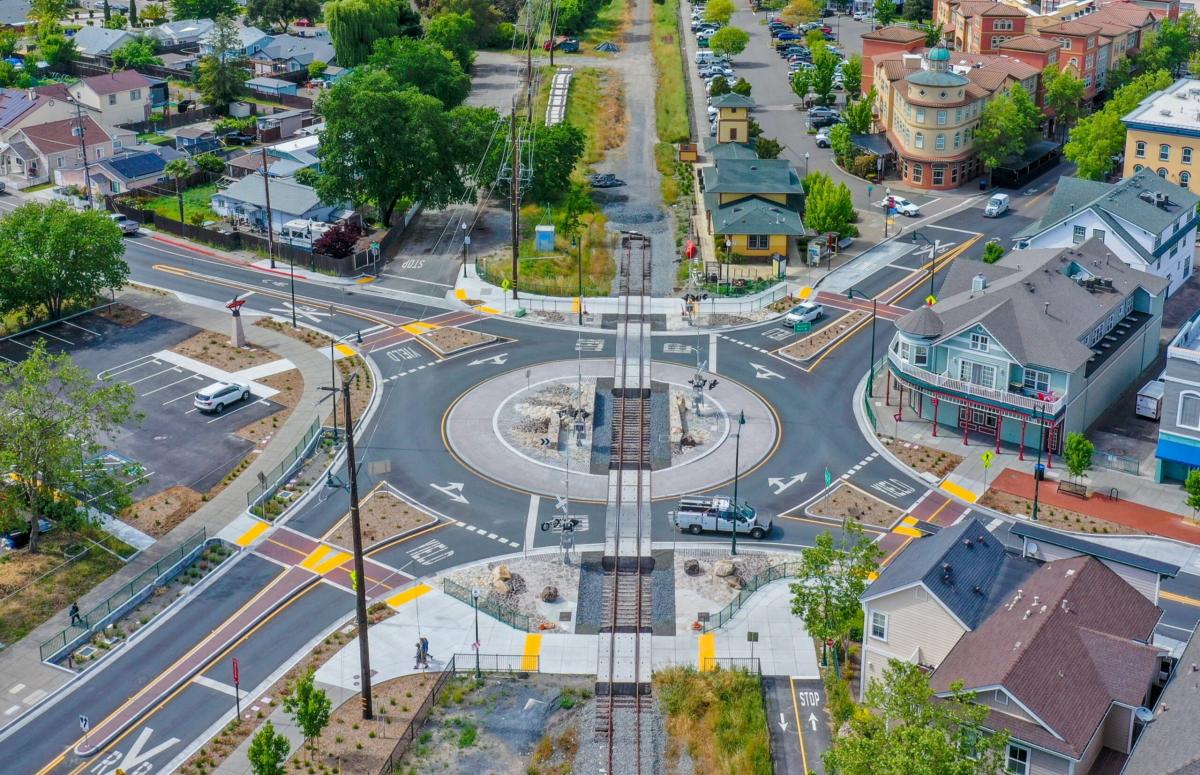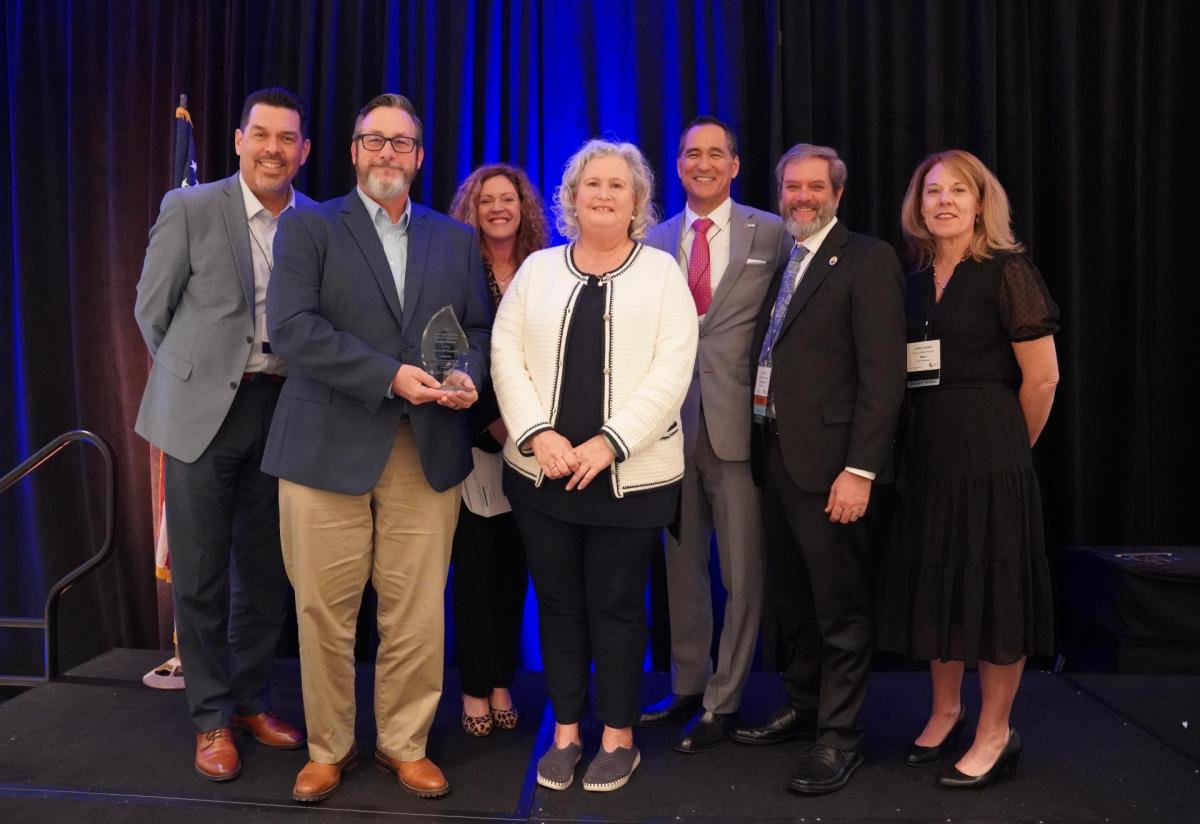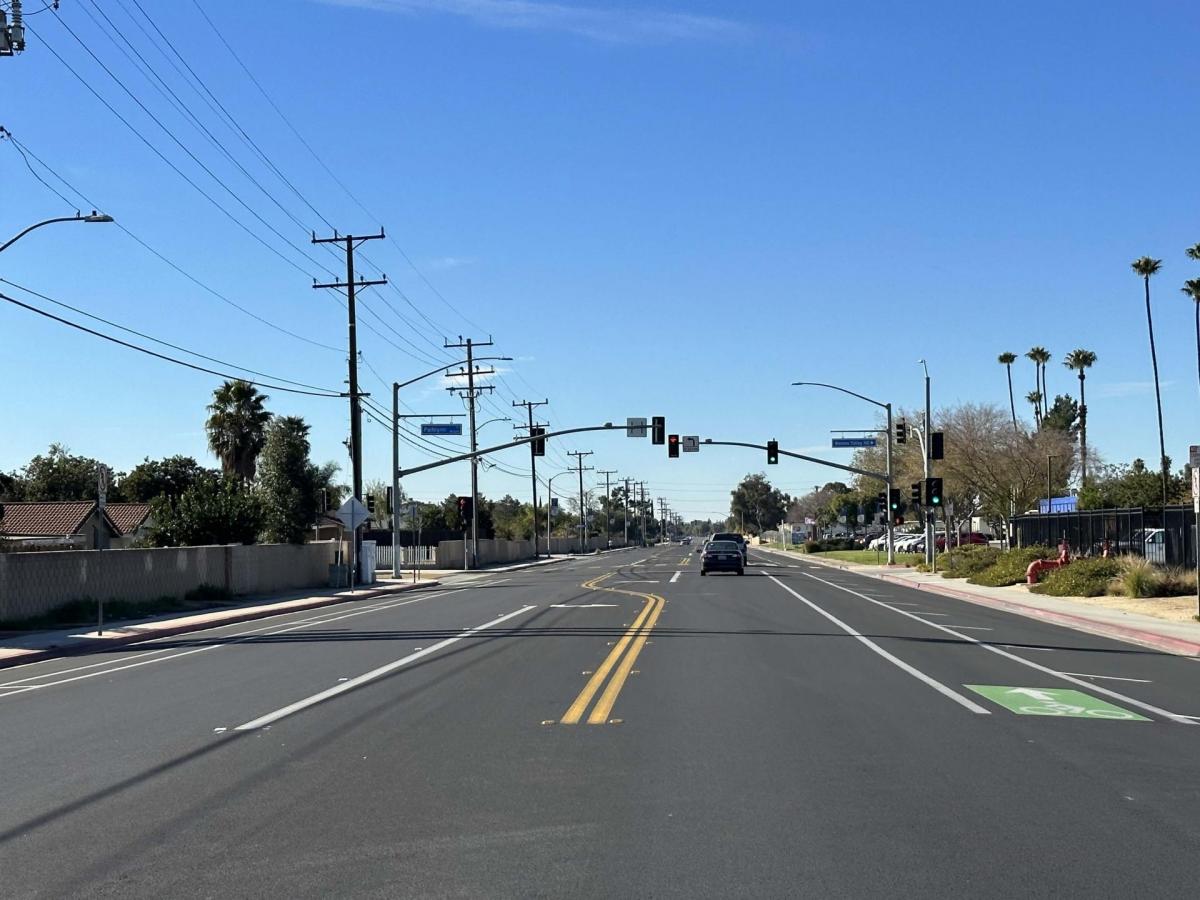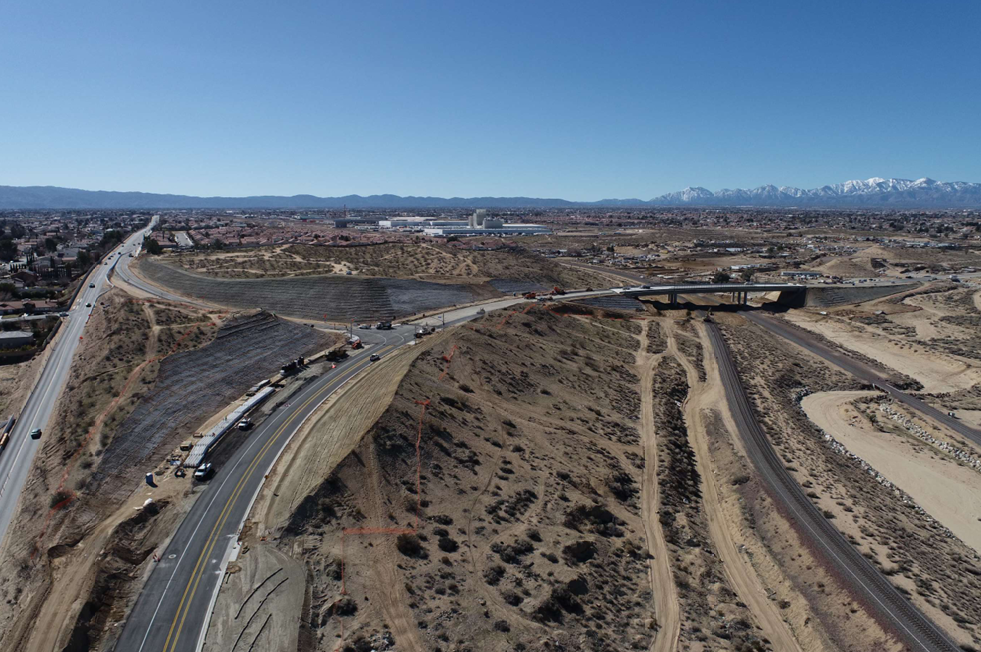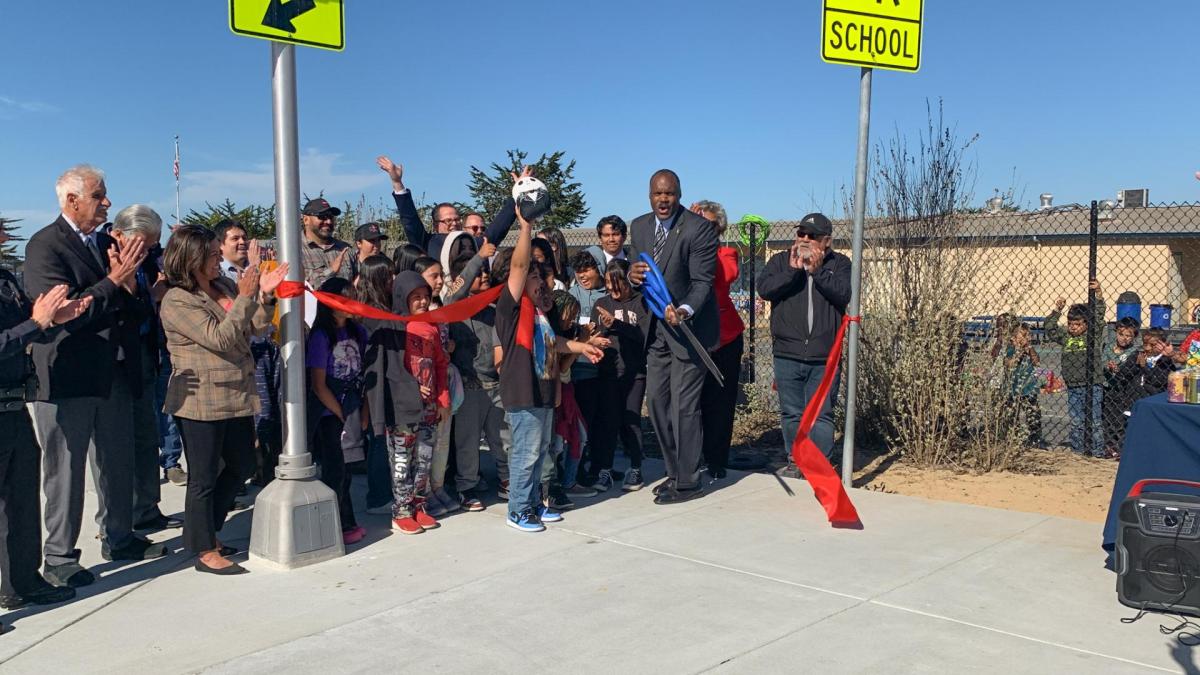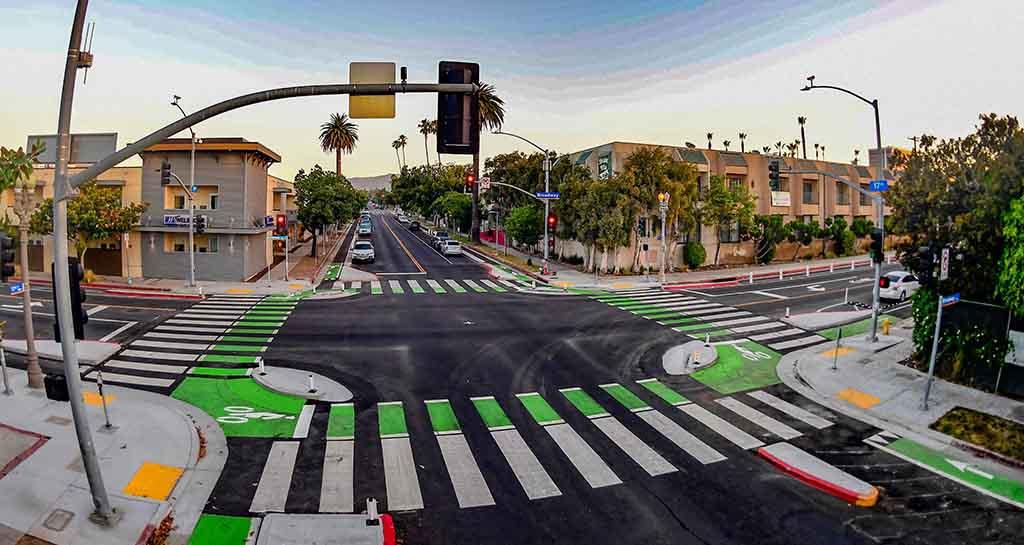There’s no way roundabout it. Cities dominated this statewide award program
Brian Lee-Mounger Hendershot is the managing editor for Western City magazine; he can be reached at bhendershot@calcities.org.
Western City has several guiding values, chief among them collaboration. The problems facing California are bigger than any one community. When we set aside petty differences and outdated ways of thinking, anything is possible. Unless we are talking about award programs.
After two years of county domination, cities have reclaimed their rightful place at the top of the Outstanding Local Streets and Roads Project Awards. Windsor, Moreno Valley, Victorville, Seaside, Santa Monica, and San Francisco secured five out of five awards. And yes, none of these projects would have been possible without collaboration — sometimes with counties.
Windsor’s rare roundabout
Windsor did something only a handful of municipalities have done. It built a roundabout with a railroad track running through it, which will eventually connect to regional passenger train service. The project also includes new sidewalks, realigned crosswalks, curb ramps, refuge medians, and connections to a multiuse pathway.
The town had to work closely with regional transit agencies and utility companies, as the project falls within the railroad right-of-way. Officials say that the benefits far outweigh the costs by a significant margin, particularly when compared to a signalized intersection. They expect the new design will reduce injury collisions by 75% while dramatically reducing greenhouse gas emissions.
Windsor won the top award for the roundabout — and for good reason. “[These projects] help to make communities more enjoyable and better places to live,” said Matt Wargula, who managed the project for engineering firm GHD. “The project brings many benefits of traffic safety and operations but also provides the community with an … enhanced sense of place.”
Moreno Valley completes a ten-year project in 18 months
Pavement rehabilitation might be the least exciting but most noticeable part of modern infrastructure. But what if I told you that a city completed a ten-year pavement rehabilitation project in just 18 months? Would that change your mind?
Enter Moreno Valley. State and federal funding played no small part in the project’s success. But the city was also able to cut costs — and save time — by bundling projects under a single contract. The project included upgraded curb ramps, new crosswalk beacons, and improved bike lanes.
City staff used recycled tires for part of the project, diverting roughly 500,000 tires from landfills. About 20% of the project used recycled asphalt. At 460 lane miles, it is the city’s largest-ever public works project.
“The successful completion of this project fills the city with immense pride, knowing the project has delivered such substantial benefits to the community,” said Quang Nguyen, the city’s capital projects principal engineer. “Moreno Valley residents have overwhelmingly supported and praised the project, further affirming its positive impact.”
Victorville builds its biggest bridge
For its part, Victorville put the finishing touches on a long-anticipated project: the Green Tree Extension. The enhanced roadway connected the communities of Victorville and Apple Valley and reduced the average commute time by about eight minutes. The decades-spanning project spanned 19 parcels, over 30 easements, and some funding constraints. But by far the biggest challenge though was the Green Tree Bridge — the largest bridge in the city.
“The Green Tree Extension was first envisioned five decades ago,” said Sue Jones, the city’s public information officer. “Many visionary leaders over the past 50 years kept this beneficial project moving forward for the benefit of our community. This project is a great example of the collaborative spirit in the Victor Valley and the county of San Bernardino.”
The project includes seven miles of connecting bike lanes, protected sidewalks, a water quality basin, and other upgrades. The city also invested in a 16.7-acre restoration site in an earlier phase of the project, which exceeded the success criteria set forth by the regulatory agencies.
Seaside students see safer streets
Seaside and Fresno County both won an award for their safe transportation projects. In Seaside, city officials faced a familiar predicament at the Ord Terrace Elementary School: low visibility and lots of congestion. Parents had to park close to a key intersection, double park, or drop students off in the streets. Drivers couldn’t always see students in the crosswalk. Buses had to maneuver around all this.
Today, it’s a much different environment for the school’s roughly 400 students thanks to a curb extension, flashing crosswalk lights, and other visual aids that decrease dangerous vehicle movements and increase pedestrian visibility. The city worked closely with the school district on the project, which also redesigned the student loading zones and parking lots.
“Not only does it have extra benefits by calming traffic, [but] the project also improves safety for the most vulnerable community members, children,” Assistant Engineer Leslie Llantero said. “The projects were an opportunity for collaboration between the city and school district to bring even greater safety improvement to the community.”
Santa Monica and San Francisco move closer to zero traffic deaths
Santa Monica and San Francisco tied this year for their complete streets projects. In Santa Monica, the city improved a corridor that has experienced an increase in pedestrian and bicycle traffic since a nearby light rail station opened. The project included curb-protected bike lanes, protected intersections, “mini traffic circles,” pedestrian-scale lighting, and other safety enhancements.
City officials say the project is a crucial step towards its Vision Zero goals. While the number of crashes is down in Santa Monica, the number of fatal and severe injury crashes varies.
“We are committed to advancing bike and pedestrian safety projects to get to zero and stay there,” said Jason Kligier, Santa Monica mobility manager. “The project has raised the standard for a low-stress multimodal complete streets project that is comfortable for all ages and abilities.”
Like in many similar projects, staff had to deal with a fair bit of community pushback. Residents raised concerns about parking and navigating a new type of intersection. Staff mitigated these concerns with an education campaign that included, among other things, an ice cream social. Community groups like Santa Monica Spoke and Santa Monica Safe Streets Alliance also played a key role in generating support. In the end, the city made just modest changes to the project.
San Francisco completed a similar Vision Zero project on its Upper Market Corridor. The popular, multi-functional thoroughfare has six intersecting streets. The project improved safety with new traffic signals, improved bikeway protections, shortened pedestrian crossings, and drainage improvements.
Like Santa Monica, San Francisco officials worked closely with stakeholders to deliver the project on time and on budget, despite major public events. The completed project includes several elements that honor the city’s rich LGBTQ+ history, such as rainbow honor walk plaques.
Paso Robles overhauls the “worst intersection in town”
Los Angeles County, Tehama County, and the city of Paso Robles received honorable mentions for their efforts as well. The judges recognized Paso Robles for a distinctive figure-eight roundabout that reduced traffic congestion and safety concerns without acquiring new property. The city installed pedestrian and cyclist protections during construction, as well as new waterlines, sewer lines, fiber optics, streetlights, and other improvements.
The intersection had the dubious distinction of being the “worst intersection in town.” Drivers had limited visibility and there was no safe pedestrian or bike access. The intersection skew, right-of-way constraints, and unprecedented rainstorms further complicated the project. Many residents considered the project a waste of time and money. And even with advance planning, staff had to scramble at the last minute to accommodate extra-large vehicles.
Despite these bumps, the project was completed on time, thanks again to the strong collaboration between the city and contractors.
“Now almost a year later, negative comments have been eliminated and replaced with positive comments [that] give kudos to staff for this great design,” said Ditas Esperanza, the city’s capital projects engineer.
The Outstanding Local Streets and Roads Project Awards are sponsored by the League of California Cities, County Engineers Association of California, and California State Association of Counties. Visit Save California Streets to learn about the nitty-gritty of each project.

